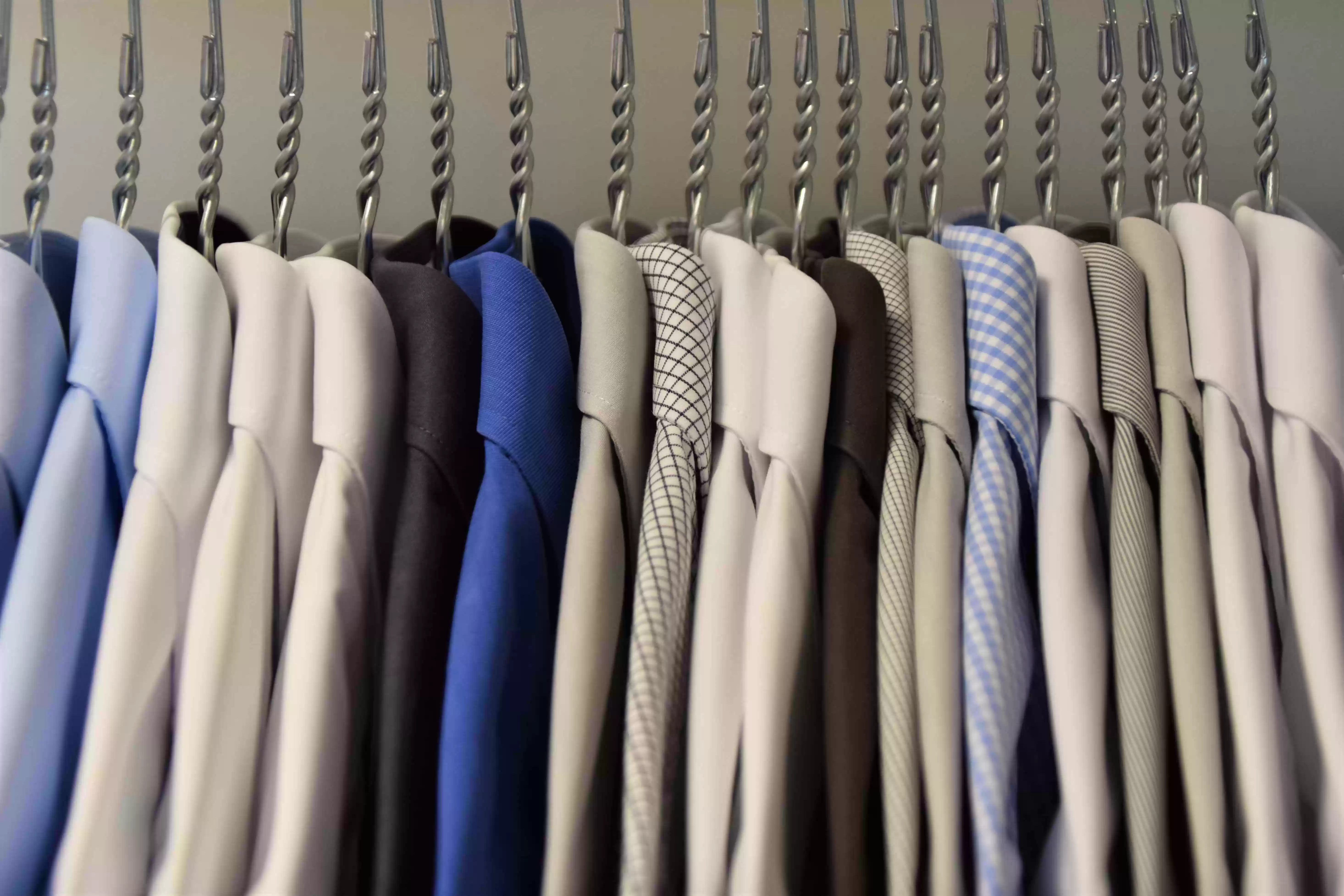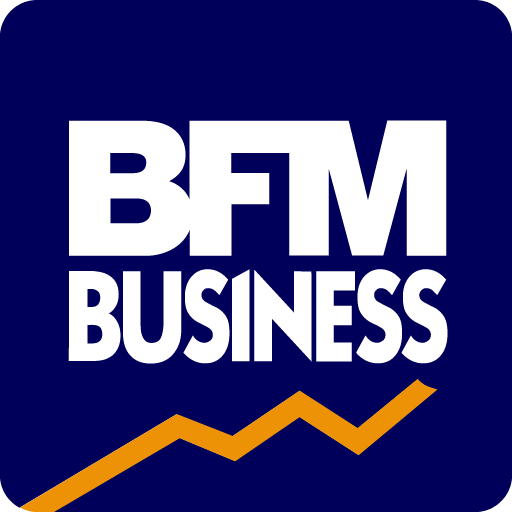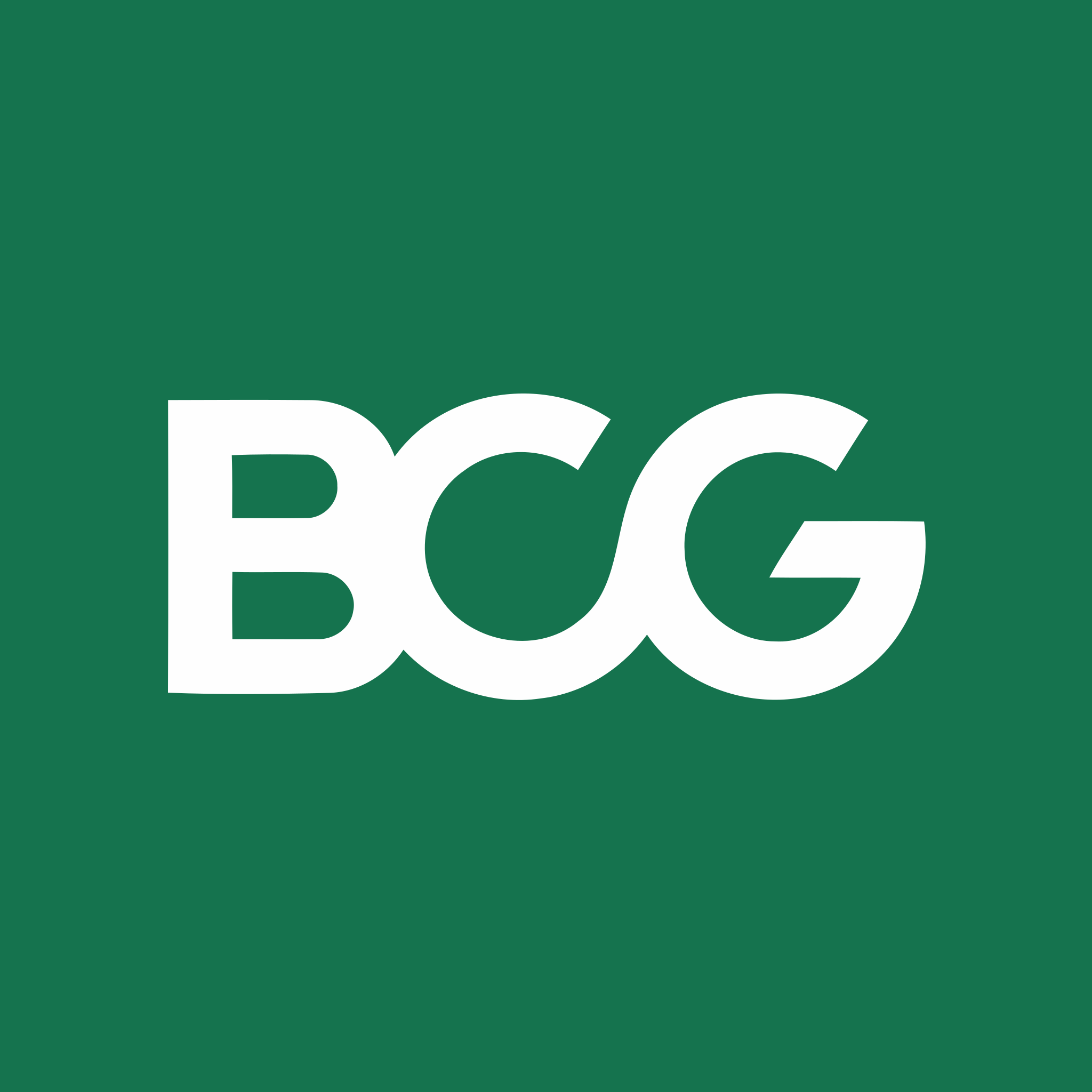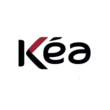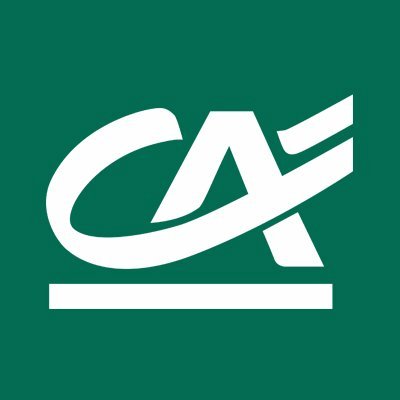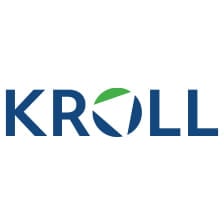Detailed content of our market study
 Inforamtion
Inforamtion
- Number of pages : 35 pages
- Format : Digital and PDF versions
- Last update :
 Summary and extracts
Summary and extracts
1 Market overview
1.1 Market overview and definition
Work clothes are items of clothing designed to be worn in the course of a professional activity, often with the aim of protecting the worker against one or more safety hazards.
There are four main categories of workwear:
- Technical clothing ;
- Image clothing ;
- Uniforms;
- Personal protective equipment (PPE).
Nevertheless, the distinction between these categories is gradually becoming blurred, as many PPE or technical garments are becoming increasingly personalized, thus including the notion of image. For example, the Covid-19 pandemic highlighted the importance of specialized PPE, particularly in the medical sector, where demand for disposable and reusable garments rose sharply, contributing to an overall increase in demand in this segment. In 2023, these innovations also saw wider applications in other sectors such as industry, thanks to the integration of innovative fabrics to meet growing comfort and safety requirements.
The workwear market is closely linked to the dynamism of sectors such as industry, construction, certain commercial services(hotels/restaurants, transport), healthcare and the civil service. For example, despite the crisis in the construction industry (-34% in real estate transactions between Q3 2021 and Q2 2024), opportunities remain in sub-segments linked to energy renovation and new safety standards. Workwear now incorporates sportswear-inspired functionalities, such as anti-perspiration or ergonomic fabrics, to meet growing user expectations, particularly with the feminization of certain sectors. it should be noted that, according to theObservatoire prospectif des métiers et des qualifications du BTP, 20% of construction apprentices in the Île-de-France region will be women by 2021, a figure that is prompting manufacturers to diversify their collections.
At the same time, recent regulatory adjustments are having a considerable impact on this market. The European ecodesign regulation adopted in 2024 requires manufacturers to integrate recycled materials and ensure full traceability thanks to the Digital Product Passport (DPP). These measures bring with them technical and financial challenges, reinforcing the importance of innovation to meet these new requirements while controlling production costs, already weighed down by a 28.5% rise in thetextile producer price index between 2020 and 2023.
1.2 A growing global market by 2030
The global workwear and uniforms market is experiencing sustained growth, underpinned by diversified demand from key sectors such as services, manufacturing, construction, as well as agriculture and forestry. In ****, the market was valued at USD **.** billion and is expected to reach USD ***.* billion by ****, registering a compound annual growth rate (***) of *.*% over the period ****-****. This growth is fuelled in particular by manufacturers' innovation, incorporating advanced materials and ergonomic designs to meet growing expectations in terms of comfort, aesthetics and durability.
Global workwear market size World, ****-****, in billions of dollars CAGR +*.*% Source: ****
The chart clearly illustrates this upward trajectory, highlighting steady market growth year after year. from **** onwards, the value of the market grows steadily, reaching milestones such as **.** billion USD in **** and ***.** billion USD in ****, culminating in ***.* billion USD in ****. This dynamism reflects the continuing expansion of user sectors and the growing importance attached to safety standards, worker well-being and new environmental expectations.
1.3 The surge in the domestic market during the health crisis
NAF code **.**Z corresponds to "Manufacture of work clothing". This sector includes companies specializing in the production of clothing intended to be worn as part of a professional activity, notably for reasons of safety, image or compliance with standards. Items manufactured under this code mainly include technical clothing, uniforms and personal protective equipment (***), with the exception of safety footwear.
To calculate sales growth between **** and ****, we have taken **** sales as a reference and applied the price change index, base *** in ****, for each subsequent year. This allows us to measure growth in real terms, taking into account price fluctuations and production volumes.
Workwear manufacturing sales France, ****-****, in millions of euros Source: ****
The graph shows a relatively stable trend in sales between **** and ****, with a slight variation between *** million euros in **** and *** million euros in ****. However, in ****, a significant increase is observed, with sales reaching *** million euros. This increase can be attributed to the COVID-** pandemic, which has led to increased demand for personal protective equipment (***) and other technical clothing, particularly in the medical sector and essential services.
Although sales fell slightly in **** to *** million euros, they then resumed growth, reaching *** million euros in ****. This trajectory illustrates the resilience of the sector ...
1.5 French foreign trade in 2023
French foreign trade between **** and ****
For the purposes of our analysis, we were unable to find specific data corresponding exclusively to workwear. International databases such as UN Comtrade do not directly list this category under a single harmonized code. We therefore chose to broaden the scope of our analysis by using code ******, which covers a closely related category: men's or boys' cotton garments, other than knitted or crocheted.
This code includes a wide range of non-knitted or crocheted cotton garments, mainly intended for general use. Although this category is not strictly limited to workwear, it covers products similar in terms of materials and functionality, such as cotton shirts, jackets or pants, often used in professional or semi-professional environments. The use of this code thus provides an approximation of market trends, while recognizing that this data may include garments not exclusively dedicated to professional activities.
This approach guarantees continuity in the analysis and provides a solid basis for comparison, despite the limitations of customs data classification
Trend in French workwear exports and imports France vs Rest of World, **** - ****, in millions of euros Source: ****
The chart shows France's main customer countries for the code in question, in ****, expressed in millions of euros. ...
2 Demand analysis
2.1 Typology of demand
There are two types of demand for workwear:
Demand from the private sector: this includes employees of construction and public works companies, as well as those working in the commercial services sector (***). Industry and construction alone account for three-quarters of total demand. Demand from the public sector: this includes public-sector employees such as law enforcement officers, healthcare personnel and land-use planners.
In all, * million French people- a third of the working population - wear work clothes. [***]
The sectors listed below are those that make the greatest use of workwear (***). Thus, analyzing the dynamics of these sectors is tantamount to analyzing the dynamics of the workwear and PPE market:
Salaried employment in the various sectors Salaried employment in the industry sector France, ****-****, millions of people Source: ****
Between **** and ****, industrial employment declined slightly before stabilizing at around *.** million in ****. This sector remains crucial to demand for workwear and PPE, given the risks inherent in working environments.
Salaried employment in the construction sector France, ****-****, millions of people Source: ****
After a dip in ****-****, construction jobs rose to reach *.** million in ****. This sector remains one of the biggest consumers of workwear and PPE, particularly for fall and respiratory protection.
Salaried jobs in the ...
2.2 Salaried employment determines demand
Salaried employment, particularly in the public sector, is a key driver of the personal protective equipment (***) market. This market is directly influenced by the equipment needs of a varied workforce, including salaried employees, temporary and public workers, as well as self-employed workers such as craftsmen.
In the private sector, construction sites and industrial plants account for a major share of demand, due to the risks inherent in these working environments. At the same time, the public sector plays a central role, with strict PPE wearing requirements for many categories of personnel, such as healthcare professionals, law enforcement officers (***) and firefighters. This growing demand, driven by safety requirements and regulations, illustrates the decisive weight of salaried employment, and the public sector in particular, in the dynamics of the PPE market.
French salaried employment trends France, ****-****, in Source: ****
In the third quarter of ****, salaried employment in France rose by *. *% on the previous quarter, representing a net creation of **,*** jobs, following a slight decline of *.*% in the second quarter (***), and of *.*% compared to the end of ****, or ***,*** additional jobs.
2.3 Building and civil engineering: a key demand driver
Insee provides an insight into trends in the construction industry by looking at trends in the number of housing starts since ****. For both single-family and multi-family housing, there has been a decline in the number of housing starts since ****. However, the number of housing starts seems to rise again in ****, only to fall back again in ****, as can be seen more clearly in the last graph.
Number of housing starts France, ****-****, in thousands of units Source: ****
The growth of this sector can be measured by the evolution of the sale of older homes: a newly purchased older home implies renovation, and therefore employment and work in the maintenance and renovation sector (***).
France, ****-****, per unit sold Source: ****
Between **** and ****, we have seen continued growth in the volume of sales of older homes, with an average increase of *.**%. However, from **** onwards, various factors such as rising interest rates and falling household purchasing power, linked to inflation, caused a steady decline in the sale of older homes. In July ****, transaction volumes even reached a level similar to that recorded five years earlier, in ****.
This reduction in activity had an immediate impact on demand for joinery products and services in particular. This trend ...
2.4 Foodservice: A key driver of workwear demand
The traditional catering sector determines the workwear sector, and despite a decline during the Covid crisis, this sector is doing well and continues to do so. The INSEE NAF code **.**A corresponds to the code for traditional catering in France, and covers catering activities offering table service. It also includes bars and restaurants with rooms on board means of transport, provided they are managed by separate entities.
Index of traditional restaurant sales France, ****-****, index base *** in **** Source: ****
The sales index for traditional foodservice indicates a recovery after two difficult years (***), reaching its peak in ****.
Growth in the number of traditional restaurant establishments France, ****-****, in units Source: ****
The number of catering establishments has remained stable over the last decade, peaking at **,*** in ****.
In addition, households are fuelling growth in the foodservice sector through their consumption: since ****, household consumption of foodservices has risen sharply year on year, with a slight dip in this trend in ****:
Trend in household consumption of foodservice France, ****-****, in Source: ****
This small decline in growth could be explained by a post-covid catch-up effect.
However, the foodservice sector is facing major challenges that jeopardize its long-term stability and profitability. Among these obstacles, the skyrocketing cost of raw ...
2.5 The hospitality industry is also a major customer for workwear
The year **** marked a record for international tourism receipts in France, reaching **.* billion euros, up **% on ****, according to the Banque de France.
International tourism receipts in France France, ****-****, € billion Source: ****
The first half of **** continues this dynamic, with international receipts up *% on the same period in ****. This growth was maintained despite a slowdown in June and July, due to the absence of business tourism and the postponement of leisure travel. The Olympic Games nevertheless made a strong contribution to performance, not only at the venues but also in the seaside areas.
The hotel sector is quite directly linked to the tourism sector, hence the fact that in ****, hotel overnight stays in France rose by *% compared to ****, almost returning to the **** level with a gap limited to -*% (***).
Occupancy rates have risen in all hotel categories, with the exception of the top *-star establishments, which are more dependent on international clientele. At the same time, average prices in French hotels rose across the board, from +*% to +**% depending on the segment. This increase can be explained by the inflationary context, the return of international tourists and the hosting of major events such as the Rugby World Cup.
Despite an increase in operating ...
3 Market structure
3.1 A highly concentrated market
The workwear market in France is highly concentrated: according to data from the Agence Centrale des Organismes de Sécurité Sociale (***). In fact, most players have relocated part of their production to these countries.
Over the past few years, textile imports into France have risen significantly: (***)
Textile imports into France France, ****-****, € billion Source: ****
This competition, which is felt on both the domestic and export markets, logically impacts their business.
Number of companies in the workwear manufacturing sector France, ****-**** Source: ****
The number of employees in the sector has also been declining over the last ten years, before rising again in ****/****.
Source: ****
M&A transactions are fairly common in the workwear sector, with one or two major deals every year. The private equity fund Silverfleet Capital is particularly active in this field, with several financial transactions in recent years. Overall, this panorama confirms the market's concentration dynamic.
3.2 Most workwear manufacturers outsource industrial production
Global production increasingly Asian
A recent study published by QYResearch Group released in **** shows that China is the world's leading producer of workwear and uniforms, with **.*% of global production.[***] More broadly, South Asia is seeing its share of global production increase when Europe continues to relocate production and import most of the garments used.
Outsourcing and subcontracting
Consumer prices for workwear are on a downward trend, as manufacturers drastically reduce their production costs by offshoring or subcontracting production.or subcontracting to factories in the Maghreb, Eastern Europe or Asia, where labor costs are much lower.
Unlike traditional textile products, which are valued for their aesthetic appeal, workwear is chosen above all for its functional aspects. In the absence of any qualitative difference in the majority of workwear products, price becomes the main criterion of choice for users. To stand out from the competition, market players have to drive prices down by relocating and subcontracting industrial production abroad. It's worth noting that the textile industry outsources a great deal, while the workwear industry does even more, for the reasons outlined above. One way of seeing the offshoring already at work in the textile industry in general is to look at the import/export ...
3.3 Workwear distribution in France
The workwear market is driven by volume, and is mainly aimed at professionals who need standardized outfits, adapted to their activities and in sufficient quantity to equip all their staff.
Thus, workwear distribution is structured around * main channels:
Direct sales: in business-to-business trade, manufacturers supply end-users directly. This distribution channel is mainly used for image garments, which must meet precise specifications, implying a direct relationship with the customer. Sales through wholesale distributors: generally through building materials trading chains. This channel is favored by protective clothing and PPE, due to their intensive use by the construction industry. The leaders in this distribution channel are Gedimat, Saint-Gobain Distribution Bâtiment France and Bigmat.
The rise of internet sales has enabled new players to emerge in recent years, making faster retail sales possible for companies. Today's distribution market is highly competitive, with a multitude of players, including a large number of online-only distributors. It's not unusual for traditional distributors to develop an online offering, or at least a detailed digital storefront.
3.4 More specialized, less durable collections
With the emergence of differentiated needs according to sector and function, workwear collections are becoming increasingly specialized. Whereas a collection used to be renewed every five years, it is now renewed every eighteen months. This phenomenon is causing upheavals in inventory management, with smaller collections.
The logistical challenge is therefore real, since we need to be able to repeat the process of creating and producing a collection at a high frequency. There is also a notion of service to take into account, with the obligation to retain customer data to ensure that the new collection is exactly tailored to needs, in terms of garment size and fabric type.
Blacklader is an example of how to adapt to these changes in the way workwear manufacturers do business. The company now offers a demonstration truck capable of traveling to the distributor's customer's premises to enable employees to touch the fabrics, see the colors and try on the garments. [***]
3.5 Textile industry production prices on the rise over the past 5 years
The evolution of the producer price index for textiles between **** and **** shows a general upward trend, with a starting point of *** in **** and a significant rise to *** in ****. After a moderate rise from **** to ****, marked by a steady but contained increase, the index registers a temporary decline in ****, probably influenced by the COVID-** pandemic and the associated economic contraction. However, this trend rapidly reverses from **** onwards, with a marked acceleration continuing through to ****.
Change in the producer price index for textiles France, ****-****, index *** in **** Source: ****
This rise, particularly marked from **** onwards, can be attributed to the combined impact of several structural and cyclical factors. Among these, rising production costs, particularly energy costs, appear to have played a crucial role. Manufacturers have sought to cushion these increased costs, passing them on in part in their tariffs. This phenomenon is taking place against a backdrop of post-pandemic economic pressure and volatile energy markets.
4 Offer analysis
4.1 The different types of products
Personal protective equipment (***)
Personal protective equipment (***) refers to all clothing and accessories used to protect the worker's physical integrity, such as gloves, helmets, safety glasses, etc.
Nearly half of the French workwear manufacturing and distribution industry's sales are generated by PPE.[***] Up *.*% in ****, the PPE market now represents *.* to *.* billion euros in France, or *.*% of the global PPE market estimated at ** billion euros according to theDelta Plus Groupe's **** Universal Registration Document.
Geographical breakdown of the global PPE market World, ****, % (***) Source: ****
According to the same report, the PPE market has become increasingly globalized. While Europe accounts for a market share of **.* million euros (***). This trend can be logically explained by the worldwide expansion of industrial companies requiring PPE for their employees.
PPE can be divided into three main categories according to their degree of protection:
PPE category *protection against minor risks that may cause superficial injury. Wearing this PPE has no impact on the user's health: mechanics' outfits, cleaning staff's outfits, etc. PPE category *protection against major risks that can cause serious injury. They are subject to strict tests and standards: e.g. high-visibility vests or boots. PPE category * protection against life-threatening risks that can cause irreversible injury. Their production chain is ...
4.2 Changes in raw material prices (inflation)
The inflation of the last few months is all the more remarkable on the price of raw materials (***). The graph below shows thatbetween January **** and May ****, the price of cotton doubled. This should have a knock-on effect on workwear prices in the future.
Imported raw materials prices - Cotton France, ****-****, in US cents per pound Source: ****
After a significant drop from **.* cents per pound in **** to **.* cents in ****, the market will experience a sharp rise, reaching a peak of ***.* cents in ****. This spectacular rise reflects global supply tensions, exacerbated by the COVID-** pandemic, unfavorable weather conditions in producing regions, and logistical disruptions. Since this peak, cotton prices have begun a gradual decline, with an estimated ** cents in ****, which is still higher than pre-**** levels.
In the context of workwear, this price variation has a direct impact. Workwear often requires robust, high-quality raw materials, among which cotton is a key component for its strength, comfort and durability. The sharp rise in prices in **** and **** is likely to have increased production costs for these items, impacting manufacturers' margins and, by extension, selling prices for corporate customers.
4.3 Product trends
Workwear now incorporates the notion of image
The primary function of workwear is to protect the worker, particularly in dirty or dangerous jobs. The aim is to provide workers with all the comfort they need in terms of functionality and practicality: this led to the creation of " blue overalls ", originally reserved for workers during the industrial revolution.
But little by little, workwear has taken on new functionalities and new designs, becoming a professional garment that is comfortable, hard-wearing, modern and even trendy in terms of color, cut and quality of materials. It now fully integrates the notion of image, becoming a true sign of recognition and a means of conveying a certain corporate image. It's even possible to personalize workwear, reinforcing employees' sense of belonging to a team. [***]
While the younger generation of workers is more aware of safety risks, particularly in the construction industry, it is also more demanding in terms of comfort and design. [***]
Today's products combine attractive design with superior technical features. Manufacturers are selling products that are more adapted and more pleasant, adapted to different morphologies and with a certain level of comfort, which may include anti-transpiration devices, for example.
In addition to these technical improvements, PPE ...
5 Regulations
5.1 World Customs Nomenclature and Harmonized System
The Harmonized System (***) for the classification of goods is a six-digit code system. [***]
The HS comprises around *,*** item/product descriptions, which appear as headings and subheadings, divided into ** chapters, grouped into ** sections. The six digits can be divided into three parts. The first two digits (***).
The Harmonized System was introduced in **** and has been adopted by most of the world's countries. It has undergone several changes in product classification. These changes are called revisions and came into force in ****, ****, ****, **** and ****. Detailed changes to each HS nomenclature are available on the links below.
To compile the foreign trade and market calculation statistics for this study, we have selected the following field: NAFcode **.**Z "Manufacture of workwear". This class covers the production of men's and women's workwear and ensembles, but excludes the manufacture of footwear.
5.2 Current regulations in France
The workwear market in France is subject to very precise regulations to guarantee worker safety and minimize the risk of accidents, on three levels: national, European and international. Strict country-specific standards are one of the reasons why this industry exports so little. The European Union is the exception, with its standardized standardized safety standards.
French Labor Code
Article R. ****-* of the French Labor Code states that "the employer shall make available to workers, where necessary, the appropriate personal protective equipment and, when the particularly unhealthy or dirty nature of the work so requires, the appropriate work clothes."[***]
Article R. ****-** of the French Labor Code stipulates that this equipment must be "provided free of charge by the employer, who shall ensure that it is in good working order and maintained in a satisfactory hygienic condition through maintenance, repair and replacement as necessary"[***]
Lastly, Article L****-** of the French Labor Code states that personal protective equipment (***) is generally "provided by the user company", except for certain personalized equipment which, "defined by collective labor agreement, may be supplied by the temporary employment agency".[***]
New European PPE regulations
According to Synamap (***), European Regulation ****/*** of March *, **** on PPE repeals Council Directive **/***/EEC as ...
5.3 New regulations for 2023/2024
The year **** marked an important milestone in the evolution of regulations applicable to the personal protective equipment (***) sector. A number of initiatives have been taken at both European and international level, aimed at enhancing safety, improving product durability and providing a better framework for their use. These regulatory changes reflect a desire to adapt existing standards to modern environmental, industrial and social challenges.
One significant update is the European REACH regulation (***), published on May *, ****, which amends Annex XVII of EC regulation ****/****. This text introduces strict restrictions on the use of lead and its compounds in PVC. Henceforth, any article containing a lead concentration equal to or greater than *.*% by weight may not be placed on the market. This regulation, which will come into force on November **, ****, reflects an increased effort to limit the health risks associated with hazardous chemicals in materials commonly used to manufacture PPE.
In parallel, Implementing Decision (***) ****/***. By ensuring greater uniformity between member states, this decision also facilitates the marketing of compliant equipment.
At the European Safety Federation (***), waste management, and eco-design standards. These discussions underlined the importance of aligning industrial practices with European sustainable development objectives. For example, progress has been made in integrating recycled materials into ...
6 Positioning the players
6.1 Player segmentation
6.2 The analyst's eye
Context:
The workwear market is in a state of flux, influenced by economic, social and environmental factors. The rise of telecommuting has temporarily reduced demand for certain image garments, but sectors such as construction, healthcare and industry have maintained sustained demand. New European regulations, such as health and safety standards, are increasing the demand for compliance. In addition, the impact of the COVID-** pandemic has highlighted the need for specialized and adapted PPE, particularly in the medical sector, where disposable and reusable garments have risen sharply.
Main trends:
*st trend: Rising textile producer prices: between **** and ****, the textile producer price index in France rose by **.*%, from ***.* to *** (***). This increase reflects the impact of inflation, pressure on raw materials and rising production costs, particularly energy costs.
*nd trend: A consequence: Deficient trade balance: France's textile trade balance is chronically in deficit, marked by heavy dependence on imports. This situation is exacerbated by increased international competition, particularly from low-cost countries, and by a decline in domestic production in certain key segments.in ****, textile imports into France reached **.* billion euros, while exports were limited to **.* billion euros, resulting in a significant trade deficit of *.* billion euros.
trend *: Rising raw material prices: between ...
- Mulliez-Flory
- Adolphe Lafont (Cepovett Groupe)
- Guy Cotten
- Lebeurre LMA
- Groupe Marck (Marck & Balsan)
- Sioen Industries
- Fristads Kansas Group
- Siperco (Alsico Group)
- Armor Lux
- Rentokil Initial
- Le Laboureur
- Würth MODYF (Würth Group)
- Würth
- Engelbert Strauss
- Hultafors Group - Snickers Workwear
- Blåkläder
- Protektor - Abeba
- Dassy
- Kansas Workwear
- Oxwork
- Oxwork
- Jallatte
- Birkenstock
- Vetementpro.com
- Delta Plus
- Cepovett Groupe
- Robur Molinel
- Molinel
- Manulatex (Bobet Groupe)
- Pro-Wear
- Protechnique
- EPI Center
- Ejendals France
- MACC
- Coverguard
- Parade Protection (Eram groupe)
- Tuffery Atelier
- Paul Boyé Technologies
- A Lafont
- Actimage
- Aimee Julien
- All Mer
- Amovis Confection Masculine
- Archipels
- Belissa
- Betrancourt
- Betrancourt Production
- Betrancourt Protection Incendie
- Bld
- Bonneterie D'Armor
- Cawe Ftb Group
- Cepo Creation
- Cepo Logistique
- Cepovett
- Codupal
- Creations Cantin
- Damart
- Dupont Beaudeux
- Edc Protection
- Ets Guy Cotten
- Ets Hoste
- Ets J Rostaing
- Ets Ponsard Et Dumas
- Getex
- Gevana
- Gilbert Production
- Groupe Abilis
- Groupe Mulliez Flory (Gmf)
- Halbout
- Heran
- Honeywell Fall Protection France
- Honeywell Protective Clothing
- Honeywell Respiratory Safety Products
- Honeywell Safety Products Armor
- Honeywell Safety Products Autun
- Honeywell Safety Products Franche Comte
- Honeywell Safety Products Plancher Bas
- Ika
- Kiplay
- Manufacture De Vetements Le Beau Fort
- Marck
- Marck & Balsan
- Materiels Industriels De Sécurité (Matisec)
- Molinel
- Msa Production France
- Paul Boye Technologies
- Peauceros
- Provence Epi
- Sioen France
- Siperco
- Snv
- Sp Défense
- Sté De Confection Dionysienne (Scd)
- Syam
- Tex Bourgogne
- Warein (Etablissements Warein)
All our studies are available online in PDF format
Take a look at an example of our research on another market!
 Choosing this study means :
Choosing this study means :
Access to more than 35 hours of work
Our studies are the result of over 35 hours of research and analysis. Using our studies allows you to devote more time and added value to your projects.
Benefit from 6 years' experience and over 1,500 industry reports already produced
Our expertise enables us to produce comprehensive studies in all sectors, including niche and emerging markets.
Our know-how and methodology enable us to produce reports that offer unique value for money.
Access to several thousand articles and paid-for data
Businesscoot has access to all the paid economic press as well as exclusive databases to carry out its market research (over 30,000 articles and private sources).
To enhance our research, our analysts also use web indicators (semrush, trends, etc.) to identify market trends and company strategies. (Consult our paying sources)
Guaranteed support after your purchase
A team dedicated to after-sales service, to guarantee you a high level of satisfaction. +44 238 097 0676
A digital format designed for our users
Not only do you have access to a PDF, but also to a digital version designed for our customers. This version gives you access to sources, data in Excel format and graphics. The content of the study can therefore be easily retrieved and adapted for your specific needs.
 Our offers :
Our offers :
the workwear market | France
- What are the figures on the size and growth of the market?
- What is driving the growth of the market and its evolution?
- What is the positioning of companies in the value chain?
- Data from several dozen databases
Pack 5 études (-25%) France
- 5 études au prix de 74 €HT par étude à choisir parmi nos 1200 titres sur le catalogue
- Conservez -25% sur les études supplémentaires achetées
- Choisissez le remboursement des crédits non consommés au terme des 12 mois (durée du pack)
Consultez notre catalogue d’études sectorielles
